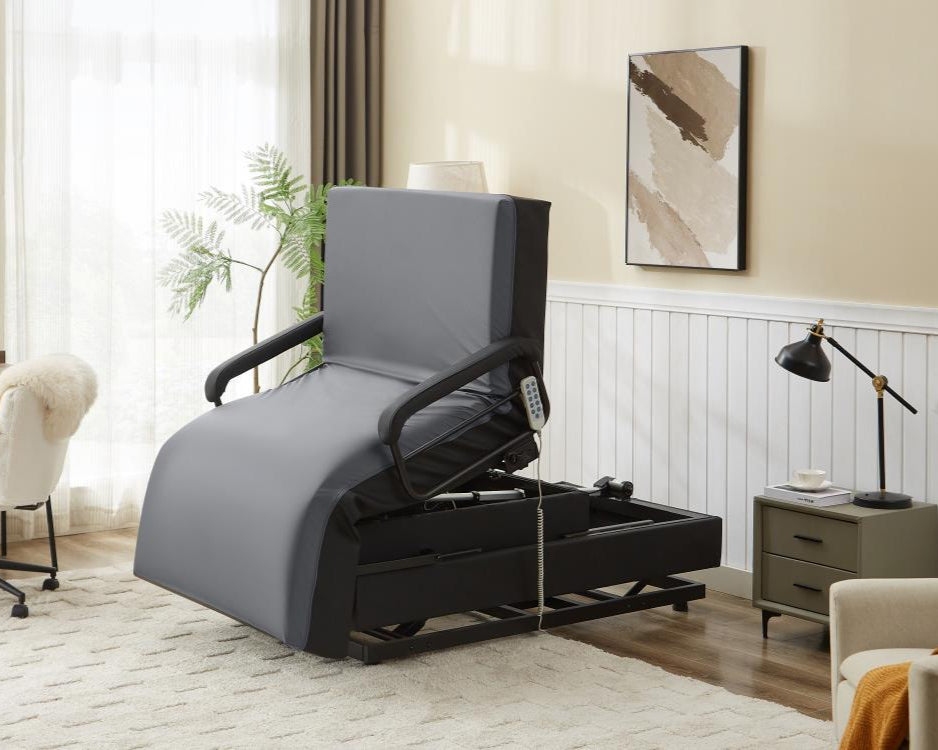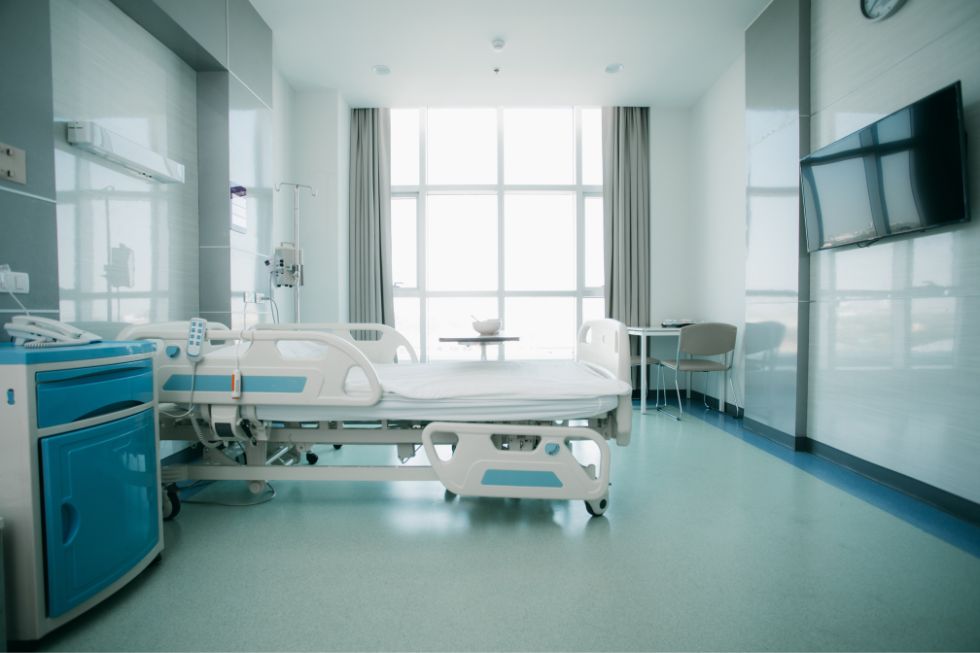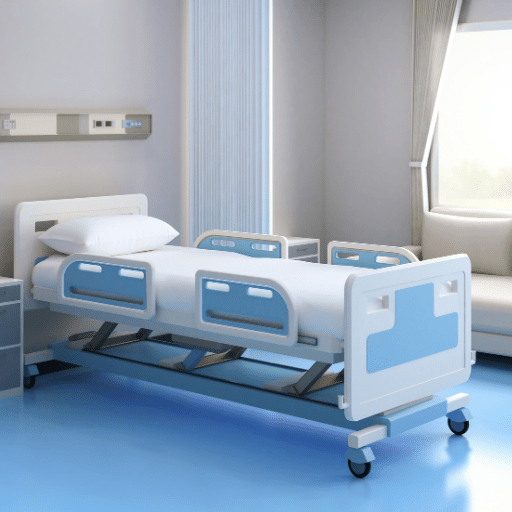Unknown Facts About Hospital Beds For Home Use
Unknown Facts About Hospital Beds For Home Use
Blog Article
About Hospital Beds For Home Use
Table of ContentsHospital Beds For Home Use for Beginners7 Easy Facts About Hospital Beds For Home Use DescribedThe Facts About Hospital Beds For Home Use UncoveredWhat Does Hospital Beds For Home Use Mean?The Main Principles Of Hospital Beds For Home Use Hospital Beds For Home Use Fundamentals ExplainedAll About Hospital Beds For Home Use
There are 3 main kinds of hospital beds: handbook, semi-electric, and fully-electric. These beds use hand cranks to readjust the bed's elevation and increase and decrease the head and the foot.
Semi-electric beds have an electric motor to raise and decrease the head and foot parts of the bed. Patients and caregivers adjust the positioning by pressing switches making use of a hand necklace. The height of the bed is readjusted by hand with a hand crank. Full-electric beds have an electric motor that can raise the head and foot sections of the bed in addition to the whole height and positioning of the bed.
Top Guidelines Of Hospital Beds For Home Use
There are a number of types of hospital beds, each made to fulfill details person demands. Here are some common types: This is the most usual kind of hospital bed, made for general clinical use.
Lower to the ground than a standard bed. This type of bed is made for larger patients, with a broader framework and greater weight capability than a basic bed.
This kind of bed is designed for seriously sick individuals that call for open monitoring and specialized medical devices such as ventilators and infusion pumps. This sort of bed is designed for use during labor and shipment, with flexible positions and features to support the mother and infant throughout the birth procedure.
Hospital Beds For Home Use Things To Know Before You Get This
Multiple function and the accessories carry out broadening grip to various components of the vertebra and the extremities without relocating the body. These are simply a few examples of the kinds of health center beds available. The particular kind of bed used will certainly rely on the client's problem, clinical requirements, and other variables.
Here is things you need to know. A one-function health center bed is a clinical bed that permits a person to relocate just the head or foot area up or down. A 2 function hospital bed usually describes a sort of medical bed that has two flexible features to assist clients in medical facilities or treatment centers.

Top Guidelines Of Hospital Beds For Home Use
A 7-function ICU bed is a kind of medical bed that gives several adjustable features to sustain seriously unwell individuals in an extensive care device (ICU) (hospital beds for home use). The seven features commonly consist of: Backrest change: The backrest can be readjusted to numerous angles to help the person stay up or rest easily
Elevation change: Related Site The bed can be increased or decreased to make it easier for patients to get in and out of bed, and for caregivers to supply care. Trendelenburg placement: The whole bed can be tilted to advertise blood circulation and circulation in the body. Reverse Trendelenburg setting: The bed can additionally be slanted in the opposite instructions to advertise blood circulation and circulation in the top body.
While more economical than electrical versions, these beds require exertion for modifications. The major advantages of hands-on beds are their cost and integrity, as they do not depend on electrical power. Nevertheless, the requirement for manual initiative can be a constraint in situations where quick changes are essential or where caretakers encounter physical challenges.
An Unbiased View of Hospital Beds For Home Use
Semi-electric healthcare facility beds offer an equilibrium of manual and electrical controls. These beds supply an ideal middle ground between guidebook and totally electrical choices, using ease of usage without the complete cost of electrical models.
Semi-electric beds are appropriate for patients who need modest adjustments to the head and foot sections but can manage without regular elevation changes. This makes them an economical remedy for those seeking convenience and convenience without the requirement for continuous repositioning. Fully electrical healthcare facility beds include electric controls for seamless modifications to the height, head, and foot areas.
Specialized hospital beds, such as ICU beds, long-term treatment beds, and bariatric beds, are carefully developed to resolve specific clinical demands. These beds offer customized treatment for diverse individual groups, enhancing both results and convenience. In the adhering to areas, we will certainly explore the main sorts of specialized medical facility beds, detailing their details advantages and applications.
With years of experience in manufacturing electric linear actuators - hospital beds for home use and close partnership with the health care market, TiMOTION is well-positioned to supply trusted medical care services. Our up and down integrated business takes care of every action of the production procedure, from style to actuator assembly, ensuring we deliver exceptional value and tailored services Learn More Here customized to your certain requirements
The Buzz on Hospital Beds For Home Use

To read more concerning integrating these technologies into your items, contact us today. More reading:.
Information is sourced from the Medicare Expense Report. Accessed January 2025. Temporary intense treatment hospitals have the highest typical number of beds at 187. They are the most usual kind of hospital in the U.S. and comprise greater than 50% of U.S. medical facilities. Children's healthcare facilities have 178 beds usually and VA healthcare facilities average 175 beds.

The smart Trick of Hospital Beds For Home Use That Nobody is Discussing
A medical facility bed is a bed designed particularly for medical objectives. It is not only a location for people to rest, yet also a system for medical operations. Unlike common home beds, hospital beds typically have adjustable attributes, which can help with clinical personnel to make numerous changes according to the requirements of people, such as changing the height, inclination, and support angle of the back and legs of the bed.
Report this page